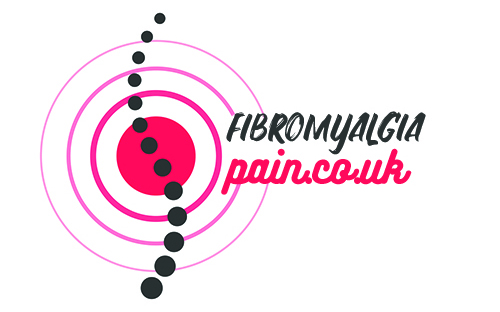Top Exercises to help with Fibromyalgia
Soft physical activity has been shown to partially relieve fibromyalgia sufferers. Fibromyalgics have pain especially at the attachment points of muscles and tendons. We must finally re-train these structures to function, re-mechanize them, and raise the pain threshold. And with sport, you learn to feel your body working, so the pain threshold goes up a bit. In terms of integrating sensation, and even in terms of tissue quality, it is good to offer progressive activity.
Swimming, Champion of All Categories
The first low impact exercise to consider for people with poor joints is swimming.
This very low impact sport provides excellent training for muscles and lungs.
Soft physical activity has been shown to partially relieve fibromyalgia sufferers. Fibromyalgics have pain especially at the attachment points of muscles and tendons. We must finally re-train these structures to function, re-mechanize them, and raise the pain threshold. And with sport, you learn to feel your body working, so the pain threshold goes up a bit. In terms of integrating sensation, and even in terms of tissue quality, it is good to offer progressive activity.
Swimming, Champion of All Categories
The first low impact exercise to consider for people with poor joints is swimming.
This very low impact sport provides excellent training for muscles and lungs.

Swimming requires the swimmer to use his muscles to pull himself through the water and different strokes can work different muscles in the arms, torso and legs, to provide a workout for the whole body.
Breaststroke is great exercise for the arms, but people with bad knees should be very careful with this kick, as the breaststroke kick puts some stress on the outside of the knees. The best shots for people with poor joints are the front crawl and the back.
These two strokes force the leg to move in a straight line, kicking the hip. The lack of lateral movement means that these movements are ideal for people with joint problems.
The lack of impact in swimming makes it an ideal sport for people trying to protect their joints. The water supports the whole body weight during exercise, which means you only have to focus on the attack technique and your breathing style. This is why swimming offers a fantastic stress-free workout for the joints.
Like swimming, water aerobics uses water as a body support throughout exercise. This means that you can get an aerobic workout while having your joints fully supported by the water. Aerobics is usually performed in music and in groups, so this exercise choice is ideal for those who like to exercise in a group and enjoy a more social experience.
Take the plunge and swim a few lengths! You can then try to run in the water if it is not too deep. Swimming is a very low impact sport and is a surprisingly difficult cardio session with no pressure on your joints. Try to swim between five and ten minutes without a break and judge for yourself
Walking
Few exercises are as liberating as that of letting ourselves be carried by the slow rhythm of our feet while our heart is beating and our gaze relaxes
According to a study, going out for a walk could improve the quality of life for fibromyalgia patients.
The quintessential “invisible disease” affects almost 4% of the world’s population, and of those 4%, almost 90% are women.
Nobody chooses to suffer from fibromyalgia, and only people who suffer from it know that this pain is not visible and know these stitches in the joints, the weight of certain muscles that do not respond, and this feeling of being trapped in one’s own body.
Even though neurologists and the rest of the specialists recommend that people with fibromyalgia stay active as much as possible, they know very well that only 31% of them manage to exercise on a regular basis.
It is not easy to find the strength to keep your spirits up when your body just does not respond.
However, researchers from the Center for Clinical Psychology at the Rey Juan Carlos University in Madrid have successfully completed an interesting project with very positive results.
Indeed, something as simple as walking for 20 or 30 minutes each day could significantly improve the quality of life for fibromyalgia patients.
Tai Chi
A team of American researchers, led by Dr. Chenchen Wang of the Tufts University School of Medicine, investigated the benefits of tai chi to relieve the chronic pain of people with fibromyalgia, combat anxiety and improve their well-being -be global. She thus undertook to compare the effectiveness of this discipline with that of traditional aerobic exercises (brisk walking, biking …), and studied whether the frequency or duration of the exercises practiced affected the health of the participants.
The researchers followed 226 people, aged 52 years on average. 92% were women who had suffered from fibromyalgia for 9 years. None used alternative medicine to relieve symptoms in the six months before the study.
Each participant was randomly assigned to aerobic or tai chi exercises, performed once or twice a week. The course of symptoms was noted at 12, 24 and then 52 weeks, while the participants continued their usual treatment.
It turned out that after 24 weeks, patients who did tai chi showed much better results than those who followed the aerobic program, and that they did it once or twice per week. The researchers also found that the effects of tai chi were constant in all subjects and that no serious adverse event related to its practice was reported.
“Treating the body and mind of tai chi results in symptom improvement similar to or better than that of aerobic exercise, which is the most commonly prescribed non-drug therapy, for various outcomes in patients with fibromyalgia, “write the study authors. “This body-mind approach can be considered as a therapeutic option in the multidisciplinary management of fibromyalgia”, they conclude.
